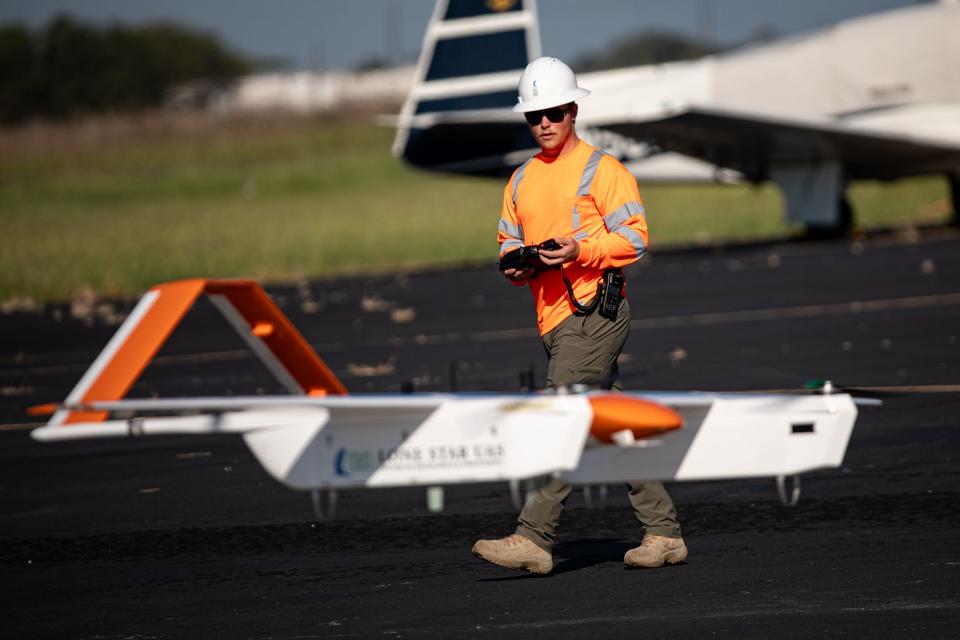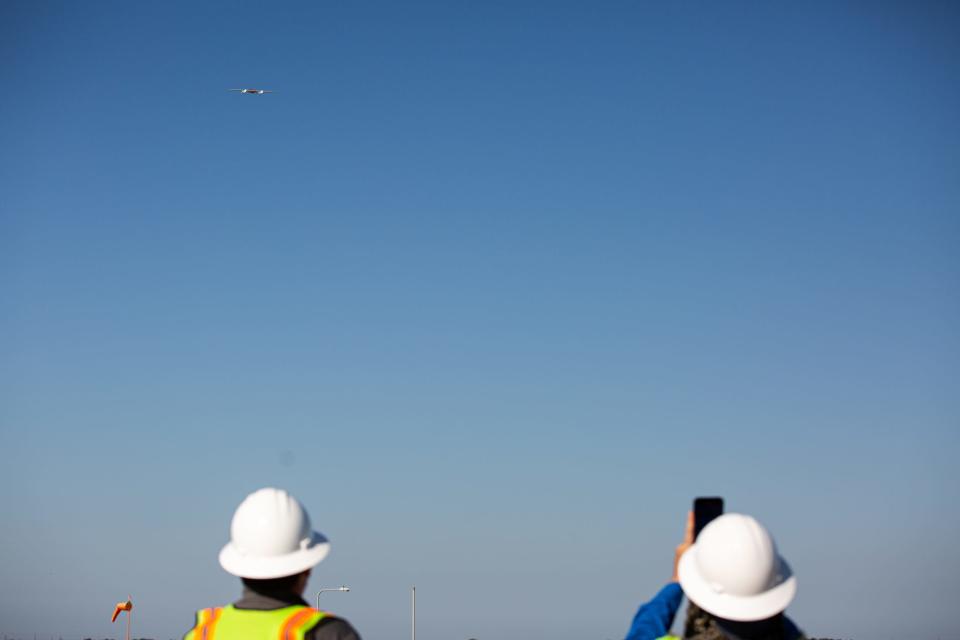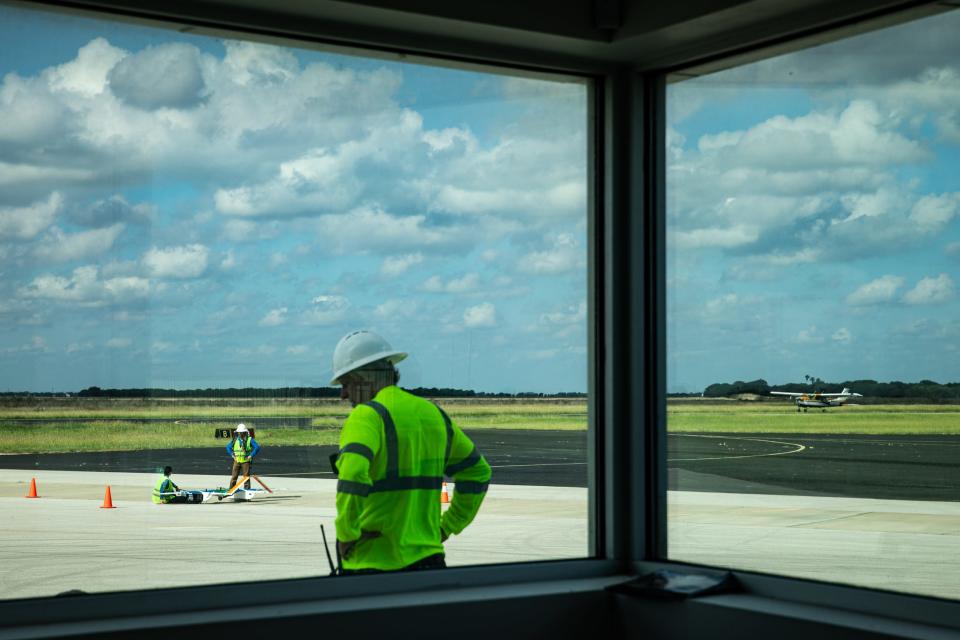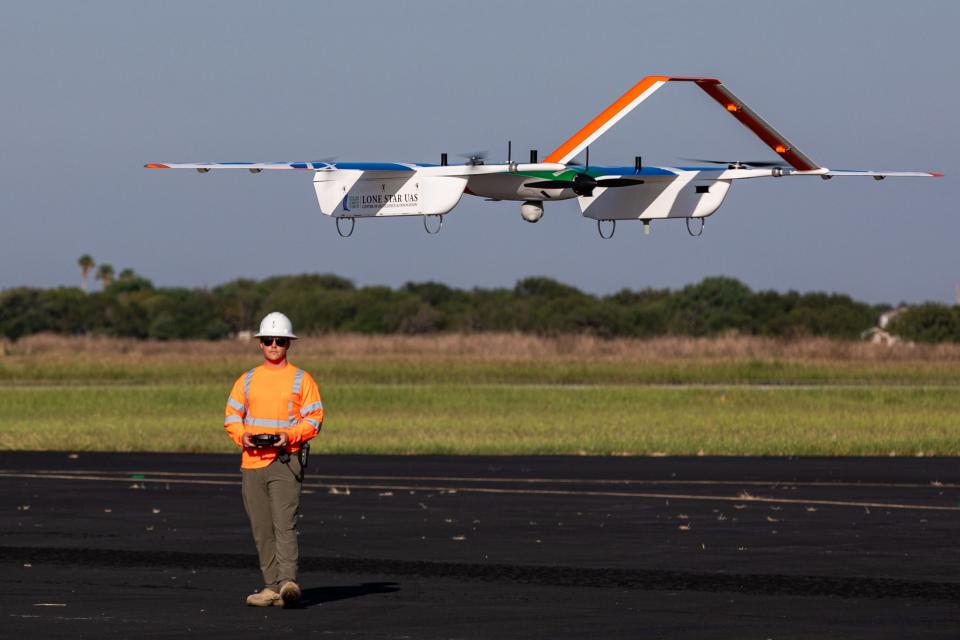Here's what's happening with drones at Texas A&M University-Corpus Christi
New tenants are coming to Corpus Christi’s airport – and while the additions are aircraft, they carry no passengers and the pilots are grounded.
The recently negotiated lease with city officials will be part of the expanding footprint for Texas A&M University-Corpus Christi’s unmanned aerial systems program, one of seven Federal Aviation Administration UAS test sites in the nation.
To include a hangar and about 19,000 square feet of empty property, the new space will augment the center’s headquarters in Flour Bluff with airport space and feed directly into the program’s fundamental purpose, said Michael Sanders, executive director of Texas A&M University-Corpus Christi’s Lone Star UAS Center of Excellence and Innovation.
It could be among the first steps toward creating an air mobility corridor within Nueces County − a controlled airspace where drones can operate.
What drones can do
As an FAA UAS test site, the center contributes its research, data and observations to the federal agency that aims to guide how to safely take UAS aircraft – more commonly referred to as drones – into shared space occupied by existing air traffic.

That means, among other tasks, evaluating drone functions – some of which are tested at the Nueces County Airport in Robstown.
But it’s also looking at potential policies and standards that should be required, said Tye Payne, the center’s assistant director of operations, testing, and evaluation.
“What we’re able to research here will have applicability throughout the country,” he added.

The program in that past has participated in NASA research – including during 2019, when Corpus Christi was one of two locations in the country chosen for an urban traffic management system for UAS.
Drones often carry a stigma based on their depiction in movies and TV, Payne said.
Part of what he seeks is to show the larger community that “they’re not a bad thing,” he said. “You always will have bad actors, but they’re not a bad thing,” Payne said. “They’re a good tool and they can be used for so much.”
The future may be near
The center has taken on a slew of focus area studies that look beyond engineering, Sanders said.
Some of those examples include research into community sentiment about drone operations, as well as partnering with the university’s psychology department for a project assessing cognitive load for pilots.

In doing so, researchers used visual and auditory cues to determine when the pilot was overloaded and he or she was unable to operate it safely, he said.
The lease agreement could play a role in the goal of creating an air mobility corridor in Nueces County, he said, adding that the center is currently in process of working with the city, county and FAA to operate from the Corpus Christi Airport.

Once permissions are secured between the four entities – and the Lone Star program shows ability to operate safely from Corpus Christi’s airport – the center can move forward with creating an air mobility corridor, which would also call for coordinating with the FAA, Payne said.
Nueces County Commissioner John Marez – whose precinct includes the Nueces County Airport, where the Lone Star program’s regularly conducts testing – said Wednesday that what he has seen from the program reaffirms the county and city working together to support of it.
The county is currently considering improvements at its airport, he added.
Among the center’s overarching goals is to bring additional NASA and FAA work, Sanders said – for example, there may in the future be a study into the potential use of larger drones in package delivery and offshore delivery. “We think this part of Texas – because of where we are, the university and the test site offers greater opportunities for this kind of cutting edge applied research,” he said.
More: NASA drones preparing for launch in downtown Corpus Christi
More: NASA: 7 under-the-radar facts about Corpus Christi's ties to space travel
This article originally appeared on Corpus Christi Caller Times: Here's what drones are doing at Texas A&M University-Corpus Christi

